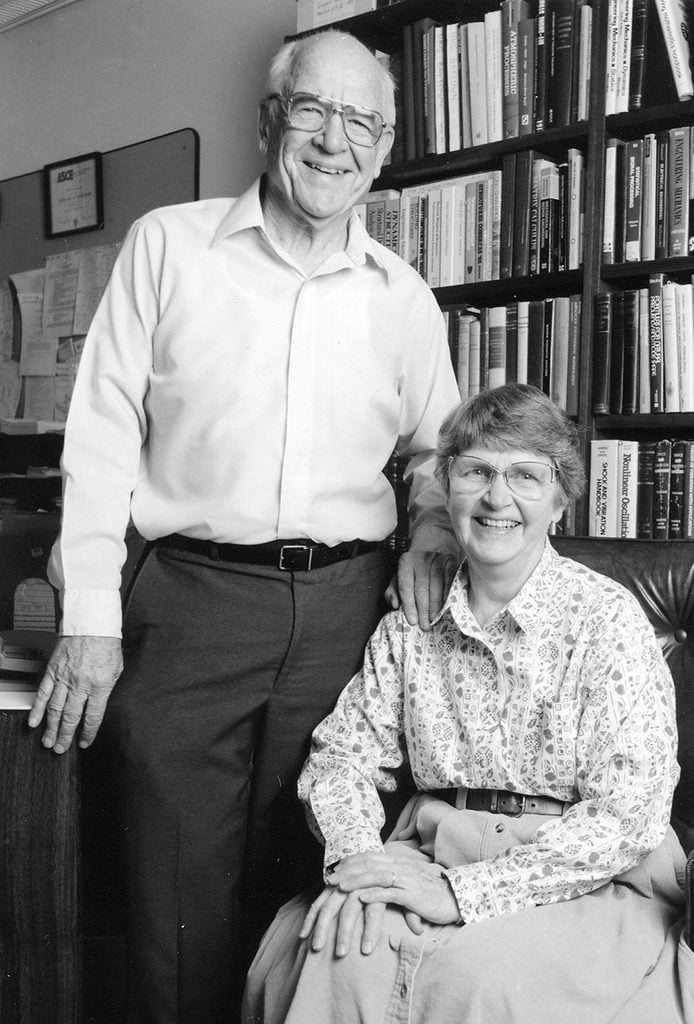At an age when others were retiring, he advanced the field of aerodynamics and aeroelasticity of high-rise buildings and long-span bridges.
Robert Scanlan had already established himself as an international expert in aeronautics and aeroelasticity—his Introduction to the Study of Aircraft Vibration and Flutter was a classic text in the field—when he came to Johns Hopkins from Princeton to do a sabbatical year.
That was in 1984. Scanlan ended up joining the Whiting School faculty at an age when most people would be retiring, and he remained an active teacher and researcher for the next 17 years, until his death in 2001.
“If you ask people what university they associate with Bob, you’ll hear Hopkins first. I had never dreamed that would happen,” recalls Ross Corotis, who had been tapped by Dean David VandeLinde to create a new Civil Engineering Department when the Whiting School was established in 1979. “I thought we would get the benefit of a few years from Bob, to help build our reputation with his big name. Instead, he stayed on, actively teaching and researching.”
The methods Scanlan pioneered for analyzing long-span bridges under wind loading are now commonly used around the world, and his book Wind Effects on Structures is widely recognized as a key reference in the field. While at Johns Hopkins, Scanlan further developed his second major career emphasis: wind engineering. He led the development of the field of aerodynamics and aeroelasticity of large civil engineering structures, such as high-rise buildings, long-span bridges,
and cooling towers.
Corotis attributes Scanlan’s “second wind” to the arrival in 1984 of the young Nick Jones, who would go on to become dean. “Nick’s interests overlapped wonderfully with Bob’s. Nick was this bright, energetic young researcher who spent 20 hours a day working here at the Whiting School. I think Nick gave Bob new life. They spent much of their research time working in the Corrsin Wind Tunnel, bringing in doctoral students for research and really building the department.”
A kind, gentle man, Scanlan was “great with students, and he’d do anything for you,” Corotis recalls. Scanlan developed a popular course, The Technology of Manmade Things, which he offered exclusively to nonscience students at the School of Arts and Sciences. And he supported the growth of the department’s up-and-coming young faculty members. “He never took a cent in raise all the years he was here,” Corotis says. “Every year he’d say, ‘Take my raise and give it to the bright, young faculty.’”
Scanlan’s wife, Beth, was equally selfless, serving as her husband’s personal secretary for no salary, from a desk in the corner his spacious office in Latrobe Hall.
Scanlan was working on a new idea for modeling wind-induced vibrations when he died in 2001, at 86. “He had a page and a half of equations written out,” recalled his son, Glenn. “He took off his glasses and took a nap—it was the perfect way for him to go.”




